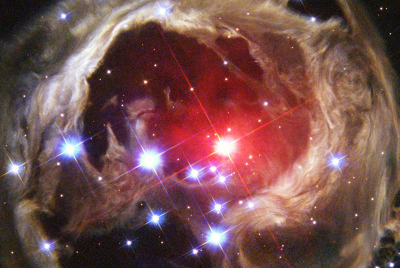Is Earth's New 'Second Moon' Dangerous? Shocking Truth About the Asteroid That Baffles NASA Scientists
Earth has a 'second moon' and it's been here for 60 years. Get the truth on Asteroid 2025 PN7, the object that baffles NASA.

It sounds like science fiction: a secret companion has been shadowing our planet since the dawn of the Space Age, a cosmic fellow traveller that went completely unnoticed for over 60 years.
But in August 2025, astronomers at the University of Hawaii finally spotted it using the Pan-STARRS telescope as part of a routine sky survey. The object, a 19-metre asteroid now named 2025 PN7, has been dubbed by many as Earth's 'second moon.'
While the discovery has sparked excitement and a flurry of questions, the reality is a little more complex. NASA has since confirmed the discovery and is actively monitoring the object.
This is not a true moon, but a 'quasi-moon,' an object locked in a strange and temporary dance with our planet. For scientists, it represents a rare and valuable opportunity to study our cosmic neighbourhood up close.
NASA confirms earth now has two moons until the year 2083 pic.twitter.com/nIcgZBxftS
— Pubity (@pubity) October 20, 2025
What Exactly Is Earth's Second Moon?
So, if it is not a true moon, what is it? Asteroid 2025 PN7 is what astronomers call a quasi-moon or quasi-satellite. Unlike our Moon, which is gravitationally bound to Earth, a quasi-moon is an object that shares a very similar orbit around the Sun.
Imagine two cars on a massive, circular racetrack with the Sun at the centre. Both cars are travelling at almost the same speed in adjacent lanes. From the perspective of one car (Earth), the other car (2025 PN7) would appear to be following it, sometimes getting a little closer, sometimes falling further behind, but always staying nearby.
This is the nature of 2025 PN7's relationship with us. It is our cosmic companion, but its primary loyalty is to the Sun.
Earth’s “second moon” 2025 PN7 isn’t a true moon, but a quasi-moon—an asteroid just 18–36 meters wide, traveling with us until 2083! Our real Moon is 3,474 km wide. That’s a difference of over 182,895 times in size! #quasimoon #2025PN7 pic.twitter.com/Y8aIVpCsCJ
— a_data_0 (@a_data_0) October 21, 2025
What baffles NASA scientists, however, is the stability of its orbit. Most quasi-satellites have more chaotic paths and are ejected from Earth's vicinity in just a few years or decades.
The fact that 2025 PN7 has remained in this stable dance for over 60 years, and will continue for several more decades, challenges current models of orbital mechanics for such small objects.Scientists are now scrambling to understand the precise gravitational interactions that have allowed it to persist for so long.
The History and Future of Earth's Second Moon
Analysis of its orbit reveals that this small, 19-metre (62-foot) wide asteroid has been our neighbour for a very long time. Scientists calculate that it was likely captured into its current quasi-satellite orbit around the 1950s, meaning it has been shadowing Earth for over 60 years without our knowledge.
However, this cosmic dance is not permanent. The gravitational pull of other planets and the subtle complexities of its orbit mean that 2025 PN7 will eventually break free. Current projections show that it will likely continue to pace our planet until around the year 2083. After that, its orbital path will diverge, and it will drift away, ending its temporary tenure as Earth's second moon.
🪨 Does Earth have a second Moon⁉️
— Freddy🇺🇸 (@SciOdysseys) October 20, 2025
Technically, there’s only one Moon, the name of Earth’s natural satellite. Asteroid 2025 PN7 isn’t a true satellite either; it’s a quasi-satellite in a twisty, screw shape, as it also orbits around the Sun. ☀️
In a way, it’s a half moon and… pic.twitter.com/AOY9twTCYV
Is Earth's Second Moon a Threat to Us?
The most pressing question for many is whether this newly discovered object poses any danger to us. The answer is a definitive no. Scientists have confirmed that 2025 PN7 poses no threat to Earth whatsoever.
Even at its closest approach, the asteroid is about 299,000 kilometres away. To put that in perspective, our actual Moon orbits at an average distance of about 384,400 kilometres. It is far too distant to pose any collision risk.
For context, an object of this size would likely burn up and disintegrate upon entering Earth's atmosphere, creating a spectacular fireball but causing little to no damage on the ground.
Why Earth's Second Moon Is a Scientific Treasure
While it may be harmless, 2025 PN7 is incredibly valuable to the scientific community. Having a stable, near-Earth object that can be observed over a long period is a fantastic opportunity. It allows astronomers to study the composition and orbital dynamics of asteroids in our immediate cosmic vicinity.
Because of its stable and predictable orbit, some scientists at NASA's Jet Propulsion Laboratory have even suggested that 2025 PN7 could be an ideal target for a future robotic sample-return mission, which would be far cheaper to execute than visiting a more distant asteroid.
By observing how its orbit evolves, scientists can refine their models for predicting the paths of other near-Earth objects. This is vital work for the field of planetary defence, as the lessons learned from our harmless little companion could one day help us track a genuinely hazardous asteroid, making our planet a safer place.
© Copyright IBTimes 2025. All rights reserved.






















